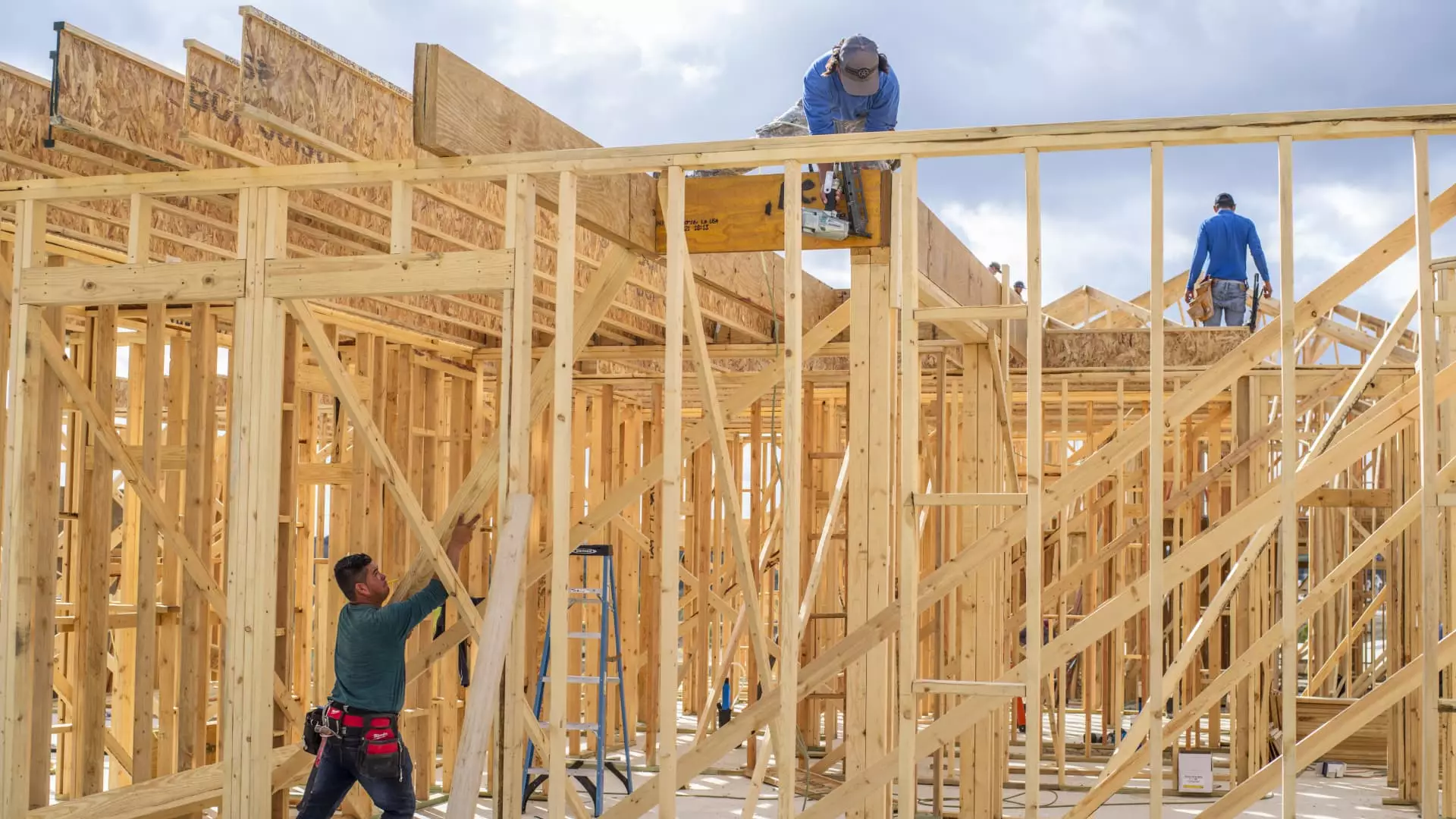The landscape of single-family home construction is experiencing a worrying downturn, with sentiment among builders reaching a five-month low in February. This trend illuminates critical issues in the housing market that could have far-reaching implications for both the industry and prospective homebuyers. One of the most pressing concerns is the impact of tariffs on construction costs, which are now weighing heavily on builders’ expectations for the coming year.
The National Association of Home Builders (NAHB) released its Housing Market Index (HMI) revealing a decline of five points from January, landing at a reading of 42. Given that any figure below 50 reflects negative sentiment, this dip suggests a high level of anxiety among homebuilders. Comparatively, the index had stood at 48 the previous year, marking a noticeable shift in the market’s outlook.
Carl Harris, the NAHB Chairman, remarked on the “policy uncertainty and cost factors” that have prompted this recalibration of expectations. This points to a broader issue in which builders, while hopeful for pro-development policies like regulatory reforms, find themselves stymied by external factors that are driving up expenses and complicating strategic planning.
A closer examination of the index’s components reveals a multifaceted decline. The current sales conditions have decreased by 4 points, now reflecting a reading of 46, while buyer traffic has similarly dipped to 29—a troubling indicator of reduced interest in the market. However, the most alarming figure is the 13-point plunge in sales expectations for the next six months, landing at 46, its lowest since December of the previous year.
These figures arrive against the backdrop of elevated mortgage rates, which have recently exceeded 7% for 30-year fixed loans after persisting in the 6% range. This increased borrowing cost directly impacts affordability for potential buyers, thereby stifling demand and causing cascading effects throughout the housing industry.
One of the most critical factors influencing builder sentiment is the looming threat of tariffs. The NAHB has highlighted that a substantial percentage of construction materials—including 32% of appliances and 30% of softwood lumber—are sourced internationally. As such, uncertainty surrounding tariff implementation is creating anxiety among builders concerning anticipated cost increases. Even though the proposed tariffs on materials from Canada and Mexico were delayed, the shadow of rising costs looms large, leaving builders wary of navigating this turbulent landscape.
Indeed, while hopes for reduced mortgage rates had initially buoyed builder sentiment, this optimism is rapidly dissolving in light of the trade uncertainties and their implications for construction costs. As homebuilders adjust their assessments, the market faces the risk of a cyclical slowdown—a scenario that could further aggravate an already challenging housing environment.
While builders are grappling with rising costs and a declining sentiment, overall housing supply is also experiencing turbulence. Single-family housing starts are falling short of last year’s figures, despite a lean inventory of existing homes available for sale. This reduction in builder optimism, occurring just as the critical spring market approaches, raises concerns about a supply crunch, further exacerbating the affordability crisis.
Several homebuilding companies have reported a noticeable decline in buyer demand in their recent earnings, reinforcing the notion that external economic factors—especially mortgage rates—are critical in shaping the market. Ryan Marshall, CEO of PulteGroup, pointed out that despite attempts by the Federal Reserve to reduce short-term interest rates, elevated mortgage rates continue to stifle buyer enthusiasm.
The dynamics at play are further complicated by the evolving landscape of sales incentives. As of February, the share of builders reducing prices fell to 26%, from 30% in January. This decline signals a shift wherein incentives may be losing effectiveness in attracting buyers who are increasingly priced out of the market. With high rates persisting, the pool of potential buyers is shrinking, rendering traditional sales tactics less impactful.
For many builders, offering incentives may no longer yield the expected results, particularly for those buyers who have already determined that they cannot afford to participate in the market at current prices. This creates a paradox where well-intentioned efforts to stimulate demand may fall short of their objectives, driving home the point that builders must adapt to a changing landscape.
As we analyze the current state of the housing market, it becomes evident that the challenges faced by single-family homebuilders extend beyond short-term hurdles. A combination of tariff-induced cost pressures, elevated mortgage rates, and dwindling buyer interest suggests a tumultuous road ahead. While builders and policymakers may hold aspirations for regulatory reform and improved market conditions, the reality remains that until these foundational issues are adequately addressed, the housing market may continue to spiral into a more uncertain future. The road will require resilience and strategic pivots as the industry navigates these adverse conditions.

